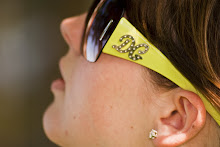A Learning Ecology Perspective:
School Systems Sustaining Art Teaching with Technology
Lin, C. (2011). A Learning Ecology Perspective: School Systems Sustaining Art Teaching with Technology. Art Education, 64(4), 12-17.
Before discussing this article in particular, I would just like to applaud the journal from which it came. Art Education is an exciting journal where art teacher-researchers send in the most up-to-date research being done in art education. The National Art Educators Association (NAEA) puts it out quarterly and it is a really amazing resource for what works and is being done in the field of art education.
This article introduces a school district that seems to have a very exciting art program. Ching-Chiu Lin documents a high school art teacher named Mr. Blidy and his program. Lin's argument in documenting Mr. Blidy's high-tech art facility is that art and technology have such deep ties that integration of the two is essential in today's art classroom. Mr. Blidy is not only the art teacher at his small rural high school but he also serves as the Webmaster for his school's website and the technology workshop instructor for his district. He is also a teacher-researcher on a funded project that explores the implementation of videoconferencing in art teaching.
As Lin describes Mr. Blidy's arsenal of technology at his fingertips, it is no wonder that his art program is thriving. He has the administration on his side and willing to give him whatever it takes for him to provide his students with the best art education possible. Hearing about Mr. Blidy being given a computer lab filled with shiny Mac computers with Photoshop and other art-making software available for student use is enough to make any art teacher drool. More than anything else, Blidy attributes the success of the program to his superintendent who was and has always been an advocate for school technology innovation. Lin writes about Blidy's superintendent, "'Mr. Sanders would bring boxes of software and say, 'Look, this is a 3D modeling program you might be interested in trying out. Hang on to that for a while' " (personal communication. May 3, 2007). With Sanders's support, Blidy's knowledge about and experience with teaching art with technology has developed greatly over his 10 years teaching at Newark, mostly through self-instruction: he researches online resources, reads manuals, and tries out the new programs." (Lin 14) His excitement paved the way for Blidy to be able to even have entire classes just devoted to computer art-making and graphic design.
Students in Mr. Blidy's art room also notice what a fantastic gift they have in their technology. Students are able to learn through inquiry and teach one another about the technologies they are exploring through their art-making. Mr. Blidy provides an open environment where students collaborate effectively to produce high quality products. Not to mention the fact that the exposure to such technology in the art room makes technology integration in other subjects much more attainable. A student named Lindsey even stated, "'The atmosphere here at school is very computer friendly. It doesn't matter what classes you take, you've got to be in contact with computers at some point"' (Lin 15) Wouldn't every school district like to be in that position today with all of the Technology TEKS now required of us?
The word 'ecology' as defined in the article is, "a set of contexts found in physical or virtual spaces that provide
opportunities for learning." (Lin 12) Mr. Blidy is most certainly providing ample opportunities for his students to learn in exciting and new ways. Technology has been made so readily available at Newark High School that it truly has become an integrated tool for teaching which enhances every learning environment within the school. I believe that the article speaks most loudly to the fact that in order to maintain a healthy technology-integrated art learning environment, the support must come from every level.
This article is truly inspirational to me as an art educator. Mr. Blidy's situation is sort of my dream. He has been given support all the way up to the top administrators in his district and that alone is something that fine arts teachers in general find very rarely. However, it is utterly apparent from this article that the difference is extraordinary. Having a solid fine arts program can enhance student learning in every subject and when given enough support, can prepare students in very practical ways for the world outside of the K-12 classroom. Technologically, art is probably the most exciting and pertinent subject to teach. Most jobs in technology involve some sort of creativity and/or problem solving, both of which are integral parts of the art process. Not to mention the fact that most art jobs in the field have the most advanced technologies heavily integrated. Technology costs money for sure but in the long run, a well funded art program can grow a student population that functions with ease in the tech-savvy world in which we currently reside.



